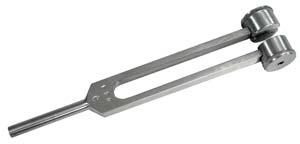Vertigo & Dizziness
Vertigo, or dizziness, affects millions of people around the world each year. In the majority of the cases, vertigo is nothing more than a temporary inconvenience. However in some cases, vertigo is a debilitating condition where day-to-day activities are kept to a minimum due to the effects of severe dizziness.
Through vestibular nystagmography (an exam procedure where we have you wear digital video goggles to record fine motor control of your eyes) we have observed that in many cases the area of dysfunction in the nervous system is the cerebellum. The cerebellum is in the posterior aspect (back part) of the brain and controls our coordinated movements.
There are specific neurological tests that we utilize to determine cerebellar function. Some of them include global coordination tests such as standing with your feet together and eyes closed, the test is positive if the patient sways back and forth and is unable to maintain a fixed position. Other tests include more fine motor skills such as touching the index finger to the nose with the eyes closed, walking heel to toe, moving the fingers rapidly as if playing the piano, or touching all of your fingers to your thumb as fast as possible. Optical tests including convergence, pursuits, and observation for anomalies like catch-up saccades and exophoric eye movement are evaluated. Oxygen concentration versus oxygen perfusion is evaluated. These tests and others are used to determine the function of the cerebellum. Repositioning tests such as Dix-Halpike are used to evaluate for the need for canalith repositioning.
Treatment of cerebellar dysfunction may include:
Unilateral (one-sided) mechanoreceptor stimulation: Extremities (arms and legs), lumbar (low back) and cervical (neck) mechanoreceptors may be stimulated on one side only to fire muscle spindle cells (muscle receptors) and joint mechanoreceptors (joint receptors) into the same side cerebellum and opposite cerebral cortex (brain). Vibration may be used to fire the dorsal columns (back part of the spinal cord) to facilitate proper cerebellar output.
In cases of Benign Paroxysmal Positional Vertigo repositioning techniques such as the Epleys maneuver may be implemented. In many cases we use a warm caloric. This procedure produces rapid results, often simply amazing results are achieved in a brief period of time due to the powerful impact this has on a dysfunctional cerebellum. The procedure is done with warm water (about 180 milliliters), which is administered in the ear to stimulate the ipsilateral (same side) cerebellum.
Eye Exercises: Eye exercises may be used to increase the frequency of firing to the cerebellum and frontal lobe of the brain.
Laser Therapy: Laser therapy may be used to promote nitric oxide and ATP, which provides an increased metabolic and healing rate. Laser helps increase activation to the brain and it often has immediate soothing and palliative effects as a result of the vasodilatation and increased circulation.
One or all of the procedures may be employed to restore the cerebellum and vestibular apparatus to its normal function.
Vertigo, or dizziness, affects millions of people around the world each year.

